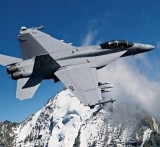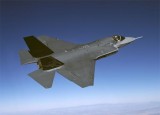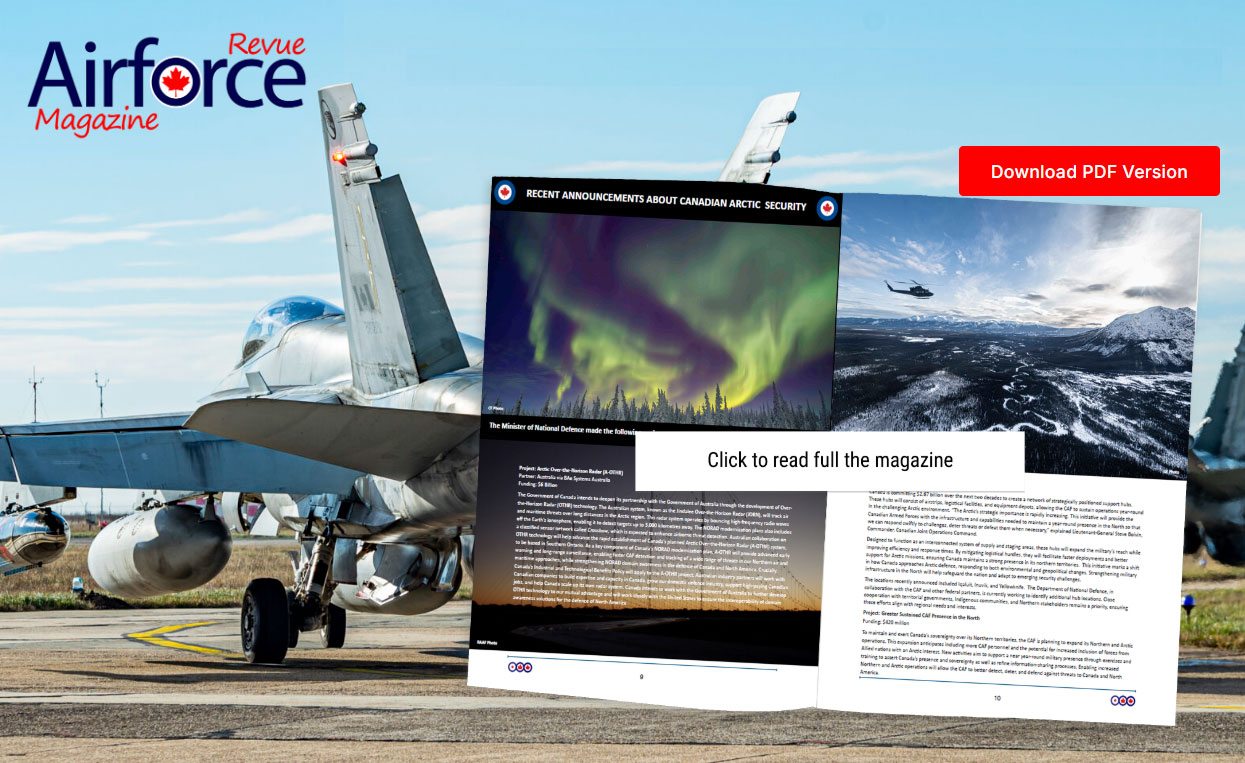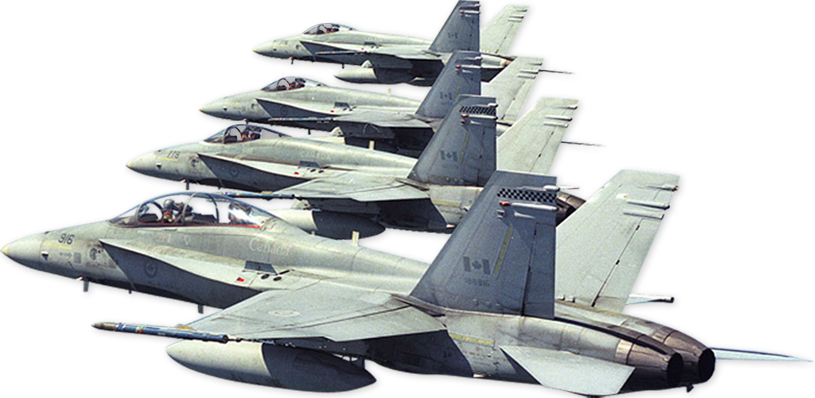Position Papers from 2009
AFAC Position Paper 03/2009

 Replacing the Canadian Manned Fighter Capability
Replacing the Canadian Manned Fighter Capability
Issue: Replacing the Canadian Manned Fighter Capability.
Background
- There is no substitute, now or in the foreseeable future, for manned fighter aircraft, which have played an important role in the capabilities of the Canadian Forces. They have enabled air defence of Canadian airspace through partnership with the United States in NORAD (North American Aerospace Defence Command). As a deterrent during the Cold War, Canadian fighters were based in relatively large numbers in Europe with an ability to project force. They participated actively in the first Gulf campaign. Later in the 1990s, they were deployed to Aviano in Italy in conjunction with the Kosovo air-to-ground and air-to-air campaign. Since September 11, 2001 the need for air power to counter the potential terrorist threat has increased the importance for fighter protection of Canadian interests. Although it is taken for granted by many, the NORAD commitment continues to be an enduring role for the CF18 in the defence of Canada. Additionally, the need for air support to expeditionary operations continues, as witnessed by the current NATO mission in Afghanistan. This air support has been provided to Canadian troops by our NATO partners.
- CF18s are now one of the few means which Canada has to project air power. A significant investment is currently being made to upgrade 79 of the aircraft to modernize the capability ensure operational relevance to their estimated life expectancy in the 2017-2020 timeframe. There is every indication that there will be a continuing need for a manned fighter capability, both domestically and abroad.
- Fighter aircraft can provide significant firepower at a relatively low incremental cost of employment. They can be used to ensure freedom of action in the air, destruction of targets on the ground over vast geographic areas and rapid support to ground forces in contact with enemy forces. The employment of Canadian fighters in support of Canadian troops is consistent with the stated CF intent to operate using integrated joint task forces and would present an excellent opportunity to exploit this capable, modernized resource.
- In addition to power projection, fighter aircraft provide an intelligence, reconnaissance and surveillance capability that is fundamentally important to the spectrum of missions cited in the Canada First Defence Strategy. Their inherent speed, agility, range, endurance (with refuelling support) and rapid response, combined with ever-evolving communications and electronic sensors, all enhanced by the critical person-in-the-loop flexibility, can perform demanding roles at home and on expeditionary missions in support of land and maritime force
AFAC Position
- There are capabilities which can only be provided by a manned fighter aircraft. Although uninhabited aerial vehicles will become increasingly capable in the years to come, there is unlikely ever to be a real alternative to fielding a manned aircraft in many situations, both domestically and on international missions. No uninhabited aerial vehicle will likely ever be able to equal the capability and flexibility inherent in the fighter man-machine interface, that is, the ability to observe, orient, decide and act where action is needed, and in real time.
- Future manned fighters will be needed in sufficient numbers to enable appropriate coverage of our large country (including the ever-more-important North), to enable the deployment of a reasonably-sized contingent (as was done during the Kosovo campaign), and to be able to surge when needed (as was the case immediately after 9/11). Acquisition of the appropriate modern weapons to ensure that the aircraft can continue to be effective as a multi-role fighter will also be needed, along with the necessary in-service support of the fleet. Additionally, interoperability with key allies and coalition partners must be a major consideration in the weapons system chosen.
- The time is approaching to consider replacement of the CF18 fleet, with the need to sign a contract in about 2012. The Canada First Defence Strategy, released in May of 2008, confirms the Government?s commitment to a manned fighter capability and its affordability in the long term defence budget. A careful analysis of future needs is underway to develop a basis for the design of an effective fighter force and to determine the specific requirements of a next-generation fighter. The next steps include the need for the Government to grant the approval necessary for acquisition to proceed, be it through a competitive process or by the down selection of a specific product.
Messages
- Canada will continue to need a manned fighter fleet for the foreseeable future. They are an essential element to the sovereignty and defence of our vast country, a role which has taken on new importance since 9/11. They are our only means of projecting the full spectrum of air power abroad and have done so effectively in the past.
- The investment being made to update and extend the CF18 fleet is needed and appropriate. The Government must now address the need for a next-generation fighter, as stated in the Canada First Defence Strategy.
- A decision to proceed with acquisition of a new manned fighter should be considered soon to permit the process to proceed, ending in the timely signing of a contract and the orderly transition from the current fleet to a new one.
AFAC Position Paper 01/2009
AFAC POSITION PAPER 01/2009
Issue: Air Force Support in Afghanistan
Background
- Canada’s commitment to the NATO military mission in Kandahar is expected to end in 2011. It is unclear whether this means an end to all Canadian military presence in Afghanistan. What is clear is that the army, which has deployed the majority of personnel to the theatre, is experiencing continued difficulty in generating the forces to send to the region. Multiple tours are common, reserve personnel are heavily engaged and attrition levels present a continuing challenge.
- The air force has contributed to the Afghanistan mission since the beginning. Camp Mirage, the Middle East support base, is manned predominantly by air force personnel and has been an essential airhead for theatre operational support, for both tactical airlift using C130 Hercules aircraft, and strategic airlift with the Airbus A310 and now the C17. During the earlier days of the campaign, it also hosted deployments of the Aurora maritime patrol aircraft in support of operations in the Gulf. Deployments of ships to the region have included Sea King helicopters in support of naval task force missions.
- In Afghanistan itself, the air force has provided Hercules transport and air drop capabilities. Air force personnel have been predominant in operations and support of the uninhabited aerial vehicle (UAV) fleet, which has provided invaluable surveillance and intelligence information. Many of the support personnel at the Kandahar base are drawn from air force resources, given the continuing high demand placed on their army counterparts. Recently, the size of the air force contingent has grown dramatically with the commencement of Chinook helicopter operations and the deployment of Griffon tactical aviation assets in support. Importantly, air operations are now conducted by an air wing in theatre, commanded by a senior air force officer, something not seen for some time.
- While the burden of the Afghanistan mission has fallen primarily on the army and has taken a predictable toll, the air force has seen a significant period of modernization over this period, with government support. In addition to the acquisition of C17, Chinook and UAV assets, the tactical airlift fleet will soon be replaced by the C130J. Further, the CF-18 fleet has recently been modernized, precision guided munitions procured and crews trained. Many new air force assets are or are about to be combat ready.
AFAC Position
- While the nature of the Canadian contribution to Afghanistan post-2011 is yet to be determined, it is likely that there will be continuing pressure to provide military capabilities to support re-construction and re-building efforts. In order to relieve the pressure on the army, and to provide some alternatives to on-the-ground involvement in combat operations in southern Afghanistan, air force resources could be effectively employed. Some of the options available are as follows:
- Continuation of tactical and strategic airlift operations, in support of ISAF forces.
- Extension of the employment of Chinook and Griffon helicopters in support of land operations.
- Continuation of UAV operations with leased or purchased air vehicles.
- Deployment of a manned surveillance capability, that is the Aurora maritime patrol aircraft which, with modernization, has surveillance capabilities over land as well as over water.
- Deployment of CF18 fighters in support of ground operations and/or in the direct employment of air power on interdiction missions.
- Consideration of ‘enabling’ capabilities such as communications networks, logistics support, engineering support to facilities and airfields, and ground-based radar surveillance.
- Capabilities could continue to be fielded within the structure of an air wing for proper command and control.
- Overall, the range of air force capabilities presents a number of options for the Government to consider, if the decision is made to continue with a military presence in Afghanistan post-2011. In making a decision to continue with a contribution, it will be important for the Government to ensure that adequate resources are provided to ensure successful deployment. The air force, like the army and navy, has been under considerable financial pressure, and should be properly funded for expeditionary operations.
Messages
- There exist within the air force many capabilities, including several new and recently modernized assets, which can be effectively employed in operations abroad.
- Should the Government wish to continue to make a military contribution in Afghanistan post-2011, the capabilities of the air force present a number of options for consideration.
- There is a need to ensure that these important capabilities are kept viable and deployed effectively through provision of the necessary funding and personnel resources.
AFAC Position Paper 02/2009
AFAC POSITION PAPER 02/2009
Issue: Simulation and Environmental Stewardship
Background
- The cost of carbon-based fuels and their negative impact on the environment demands that all practical steps be taken towards expending them responsibly. Although these fuels are essential for military operations, their consumption should be governed to some degree by the environmental impact. This can be achieved through close attention to their efficient use and to the employment of alternative means for training and currency requirements.
- Simulation has evolved over the years to provide very high-quality capabilities for familiarization, training, and mission rehearsal. While there will always be some circumstances which cannot be realistically simulated, the quality of training devices has matured to the point where most situations can be effectively represented. The cost of these devices may appear at first glance to be high, but the benefits in enabling effective, efficient training are extensive.
AFAC Position
- The need for large quantities of carbon fuels to operate military aircraft has traditionally driven the air force to exploit the benefits of simulation. The need for this has never been greater for a number of reasons.
- The emphasis on reducing carbon footprint has captured the attention of the Canadian public and governments at all levels. DND must participate in reducing their footprint wherever practical.
- Notwithstanding the initial cost, acquiring and operating simulators is less expensive than actual flying. Savings can be applied to better, more comprehensive training or reallocated to other areas.
- For many aircraft fleets, where the operational life is typically 30-40 years, a comprehensive simulation facility, properly updated and maintained, can provide considerable cost and flying hour savings.
- With smaller fleets especially, simulators are often not procured for domestic installation. Rather, access is arranged with another owner to use their facility when needed. Alternatively, a simulator location may serve several dispersed units. While this may have some cost benefits for acquisition and operation, there are downsides to such an arrangement.
- When the simulator is located away from a main base, several days may be needed to travel to and from the site. The lost personnel time and cost of this may preclude crews from sessions which would then have to be accomplished in actual aircraft.
- When the user doesn’t directly control the curriculum or training modules, some inefficiencies in training may result.
- Where an operational aircraft is used to get to and from a simulator site, the flying hours spent may not be able to be used as productively as possible.
- Proficiency checks and instrument examinations may not be able to be done on a simulator if it has not been kept fully up to date.
- The chronic shortage of personnel will be aggravated if the most effective use of their training time is not made. Demographics suggest that this situation is not going to improve in the short term.
- To remain effective over time, simulators must be updated and maintained, and their configuration managed, to ensure that they do not become obsolete. This applies to any such devices, not those only used for aircrew training.
Messages
- Stewardship of the environment and reducing the carbon footprint is a collective responsibility shared by everyone, including the air force.
- The leadership taken by the air force in employing simulators, wherever practical, should be applauded and encouraged for other areas as well.
- Appropriate resources to enable the provision of a full, leading edge simulation capability should be given serious consideration for all large equipment projects.








